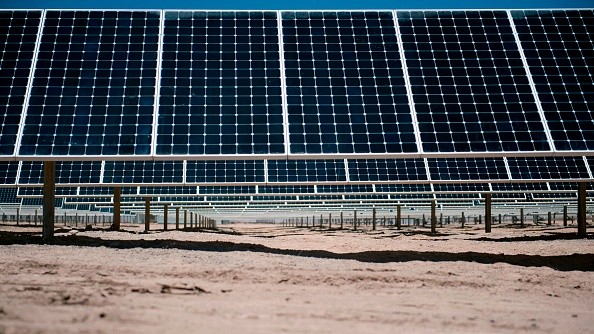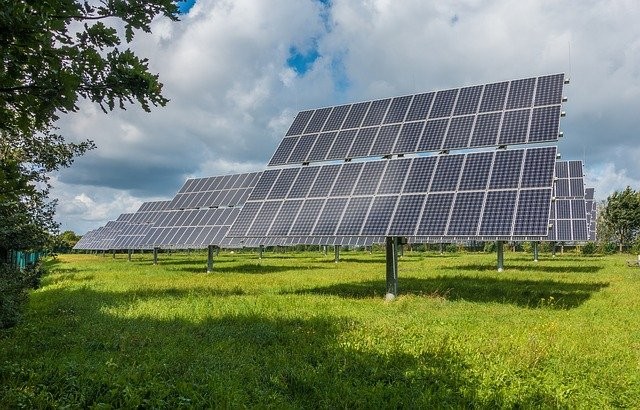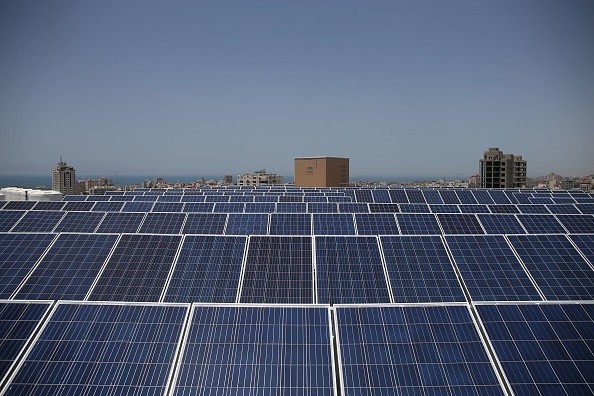Thanks to materials developed at Imperial College London, new solar cell devices that are cheaper and easier to build might be on the market shortly.
Traditional Solar Cells

Traditional solar cells are constructed of silicon, which has high efficiency and stability but is somewhat expensive to manufacture and can only be created in rigid panels.
Perovskite solar cells are a fascinating alternative since they can be printed using inks, making them low-cost, high-efficiency, thin, light, and flexible. However, in terms of efficiency and, more significantly, stability, they have lagged behind silicon solar cells, breaking down under typical environmental circumstances.
Also Read: How Can Sustainable Urban Neighborhood be Made Affordable
Innovative Material

New metal-containing compounds known as ferrocenes may be able to aid with these issues. City University of Hong Kong (CityU) researchers have improved the efficiency and stability of perovskite solar cells by including Imperial-made ferrocenes. The findings were published in the journal Science.
"Silicon cells are efficient but expensive. We urgently need new solar energy devices to accelerate the transition to renewable energy," said co-lead author Professor Nicholas Long of Imperial College's Department of Chemistry. "Stable and efficient perovskite cells could eventually allow solar energy to be used in more applications - from powering the developing world to charging a new generation of wearable devices."
"Our collaboration with colleagues in Hong Kong was beautifully serendipitous, arising after I gave a talk about new ferrocene compounds and met Dr. Zonglong Zhu from CityU, who asked me to send over some samples. Within a few months, the CityU team told us the results were exciting and asked us to send more samples, kicking off a research program that has resulted in perovskite devices that are both more efficient and stable."
Layers
The 'light-harvesting' layer of solar cell devices is made of perovskite. On the other hand, these devices have proven to be less effective at converting solar energy into electricity than silicon-based solar cells, owing to the electrons' inability to pass from the harvesting layer to the power conversion layers.
Iron is in the center of ferrocenes, encircled by carbon rings sandwiched between them. Professor Geoffrey Wilkinson of Imperial College discovered the peculiar structure of ferrocene in 1952, and ferrocenes are still being studied for their unique features across the world today.
Structure

Their structure offers them good electron richness, allowing electrons to travel more freely from the perovskite layer to the following layers, increasing the efficiency of solar energy conversion to electricity efficiency.
The efficiency of perovskite devices with an extra ferrocene layer can reach 25%, nearing the efficiency of standard silicon cells, according to tests conducted by the CityU team and in commercial labs.
However, ferrocene-based materials solved more than just one issue. After submitting many versions of these, created by Ph.D. student Stephanie Sheppard, to the Hong Kong team, the collaborators uncovered a version that considerably increases the adhesion of the perovskite layers to the remainder of the device.
This increased attachment power enhanced the devices' stability, allowing them to retain more than 98 percent of their initial efficiency after 1,500 hours of continuous operation at full strength. The inclusion of a ferrocene layer improves the efficiency and stability of these perovskite devices, bringing them closer to existing international requirements for regular silicon cells.
"We are the first team to successfully increase the inverted perovskite solar cell to a record-high efficiency of 25% and pass the stability test stipulated by the International Electrotechnical Commission," stated CityU lead researcher Dr. Zonglong Zhu.
Patent
The team has patented its invention and hopes to license it so that their perovskite devices may be commercialized. Meanwhile, they're experimenting with other ferrocene designs to increase the devices' performance and stability.
Related Article: Making Cement Green: How Decarbonizing Cement Will Help Achieve Climate Goals
For more news about making the environment sustainable, don't forget to follow Nature World News!
© 2024 NatureWorldNews.com All rights reserved. Do not reproduce without permission.





